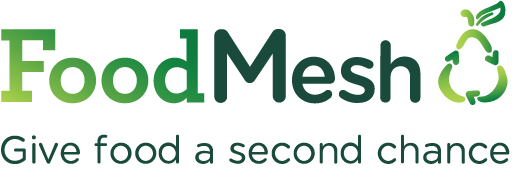26 Jun Salvation Army Vernon offers a house of hope for North Okanagan residents
Statistics Canada’s latest Income Survey found that a staggering 23% of the population live in food-insecure households – almost 1 in 4 people. Organizations like the Salvation Army in Vernon, and countless others around the country, provide a much-needed lifeline to millions of Canadians each day, and the demand for their services shows no signs of slowing down.
“Inflation is a big reason of course, and the rising cost of rent,” explains Randel Erbacker, the Salvation Army’s Community Program Coordinator. “Many of the people who come through our doors are working, but they are really struggling to make ends meet right now.” In the two years he has been in the role, Randel has observed a surge in demand for food.

“FoodMesh is our backbone. Without the donations we get through FoodMesh, we would not survive and be able to do what we’re doing for our community,” says Randel. “I am so grateful.”
The Salvation Army in Vernon – also known as the House of Hope – is the only food bank serving this beautiful northern Okanagan town’s population of 45,000. In addition to daily hampers, it distributes a wide variety of home-cooked meals through its youth group and tots program for parents and their young children – around 200 meals and snacks every month. It also shares food with seven smaller organizations in the community.

The Salvation Army Vernon is planning to open a grocery-store style program, for community members to shop for the food items they need, rather than receive a pre-packed hamper. This will be especially useful for their clients who have specialized food needs. Randel explains: “We’ve noticed the need for dietary and cultural foods have gone up a lot. It’s really hard for people who are diabetic, for example, or celiac, to get food that is safe for them to eat.” While they get a wide variety of food through the donations, they often have to purchase food to meet these specialized needs of their growing clientele.
“FoodMesh is our backbone. Without the donations we get through FoodMesh, we would not survive and be able to do what we’re doing for our community. I am so grateful.”
– Randel Erbacker, Community Program Coordinator
The Salvation Army House of Hope receives the majority of its food supply through FoodMesh’s Managed Retail Food Diversion program. On a daily basis, its team of volunteers collects a wide variety of food donations from Save-On-Foods and Buy-Low Foods in Vernon and Save-On-Foods in nearby Polson. These stores, and over 180 others across Canada, have hired FoodMesh to help them ensure the maximum volume of their unsalable food – food that is either close to its peak freshness date, or has aesthetic imperfections – is diverted to organizations like the Salvation Army in Vernon to redistribute it to local residents facing food insecurity. The donations include everything from fresh produce, meat and seafood, to dairy, bakery and deli items. “The food we get is amazing and varied. I’m sure I can pick any letter of the alphabet and will have received food starting with that letter!”

Randel cites the importance of relationships in the arrangement. “All the stores we work with are great, but I’d like to mention Darcy from Save-On-Foods Village Green in Vernon. He goes above and beyond to understand what food we need and help to ensure we get it. Recently, he even took the time to call us on his day off to give us a heads up that 1500 pounds of corn on the cob were coming our way, so we could prepare to receive such a large donation. Our clients were very excited the day we gave those out!” This personal connection clearly enhances the efficiency and effectiveness of the food distribution process.

Once the donations are collected, the Salvation Army’s volunteers bring them back to the Salvation Army’s facility, where they are carefully sorted and organized. Any produce that is wilted or blemished is treated to a special “haircut” by one of its long-serving volunteers, Margit. Anything that is no longer good to eat is put aside, to be collected by a local hobby farmer to feed their pigs and chickens.
Since the Salvation Army Vernon started its partnership with FoodMesh in 2018, it has rescued an enormous 709,000 KG of food from these local grocery stores – the equivalent of 1.2 million meals. In rescuing this unsalable food and keeping it out of waste streams, it has helped avoid 1.8 KG of C02e emissions from entering the atmosphere.
The Salvation Army Vernon has rescued 709,000 KG of food via FoodMesh – the equivalent of 1.2 million meals.
The Salvation Army Vernon’s impact extends far beyond the meals it is providing and waste it is averting. “It isn’t just food we’re able to provide our clients,” says Randel. “Food provides the means for them to make connections. They come through the door for the food, but they stay for support they are able to get while they’re here.” The Salvation Army House of Hope has a saying that it operates by: “We want to be transformational, not transactional. The donations we get through FoodMesh aren’t just food; they are a means of connection and personal support for our clientele.”
Join the North Okanagan Food Recovery Network
Are you a retailer? Find out how we can help you maximize the impact of your unsold food.
If you are a charitable organization, learn about how you can get a supply of fresh food donations for your programming.


